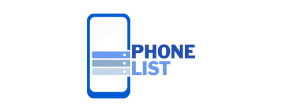Your past customers are very valuable. Their purchase history reveals much. It shows their preferences clearly. Generic offers waste this potential. Purchase history segmentation changes this. It allows highly targeted offers. You send relevant recommendations now. This boosts repeat purchases significantly. It strengthens customer loyalty too. This strategy maximizes customer value.
Imagine a customer buys running shoes. You know their size and brand preference. Sending them offers for hiking boots is inefficient. Instead, offer them running apparel next. Or perhaps a discount on new insoles. This feels incredibly personalized to them. They are more likely to buy again. This makes your marketing highly effective. It increases your revenue directly.
Why Purchase History is a Segmentation Goldmine
Purchase history is a rich rcs data data source. It directly shows customer intent. You see what they actually buy. This reveals their true interests. Segmenting by this data is smart. You avoid sending irrelevant offers. Customers receive content they desire. This enhances their experience greatly. It boosts open rates and clicks. It leads to higher conversion rates. This reduces marketing waste significantly.
Key Criteria for Purchase History Segmentation
Several criteria guide this social media tools for lead generation segmentation. Specific product purchased is key. (e.g., bought Brand X smartphone). Product category purchased is broad. (e.g., bought items from “Skincare”). Purchase frequency is also important. (e.g., bought 3 times in 6 months). Recency of purchase matters too. (e.g., bought in the last 30 days). Average Order Value (AOV) helps. (e.g., spent over $100 per order). Loyalty level is powerful. (e.g., repeat vs. first-time buyers). Preferred brands or sizes can be used. This allows ultra-specific targeting. Combine criteria for precision segments. For example, “bought running shoes last month and spent over $50.”
Crafting Winning Targeted Offers
Crafting offers needs careful marketing list thought. They must align with purchase history. If they bought a camera, offer lenses. Or related accessories like tripods. If they bought baby clothes, offer toys. Or products for toddlers later on. Offer exclusive discounts on related items. Bundle complementary products for value. Suggest product upgrades or replacements. (e.g., “Time for a new phone?”). Showcase new arrivals in their preferred category. Leverage social proof with testimonials. “Customers who bought X also loved Y.” Set up automated workflows. Trigger offers after a specific time. Or when a new related product launches. Continuously A/B test your offers. See what resonates best with segments. This ensures maximum ROI from your efforts.

